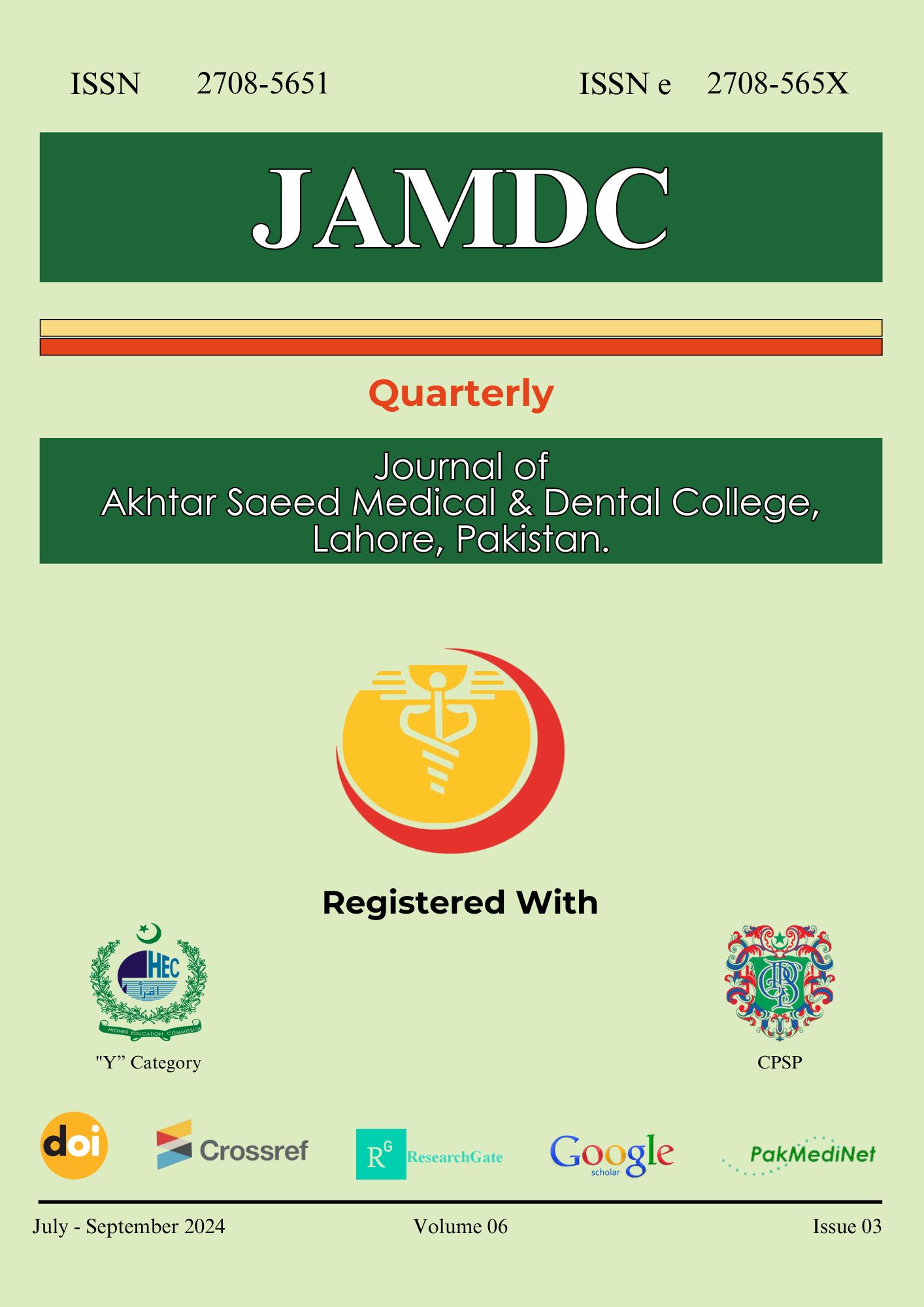RELATIONSHIP OF PERIPHERAL BLOOD LYMPHOCYTE/ MONOCYTE RATIO WITH CLASSICAL HODGKIN’S LYMPHOMA STAGE AT THE TIME OF DIAGNOSIS AND ITS UTILITY AS PROGNOSTIC FACTOR
Main Article Content
Abstract
Introduction:
Hodgkin lymphoma, a prevalent neoplasm in our part of the world requires the simplest investigations that can overview prognostic features.The objective of this study is to examine the lymphocyte-monocyte ratio (LMR) in various stages of classical Hodgkin’s lymphoma (cHL) as defined by Ann Arbor Staging System and to study the relationship of LMR with the overall survival of the patients.
Materials & Methods:
A prospective cohort study was done at the Department of Pathology, King Edward Medical University, Lahore from June 2019 to June 2024. Eighty patients were enrolled after informed consent. Clinical parameters included age, gender, and clinical stage. Laboratory
parameters included histology, serum albumin, Hemoglobin (Hb), Total leukocyte count, ALC, and AMC with 3-year overall survival. LMR was calculated from the EDTA sample taken and overall survival in each stage was recorded.
Results:
Out of eighty patients, 78.8% were males. The mean age was 40.9±14.8 years. LMR was highest in stage I and lowest in stage IV. Lower LMR was associated with inferior overall survival.
Conclusion: LMR at diagnosis is inversely related to disease stage in cHL and patients with low LMR have a poor disease outcome. This relationship with stage can be used to predict the clinical outcome in patients with cHL in resource limited countries

